
 HMS WALKER
HMS WALKER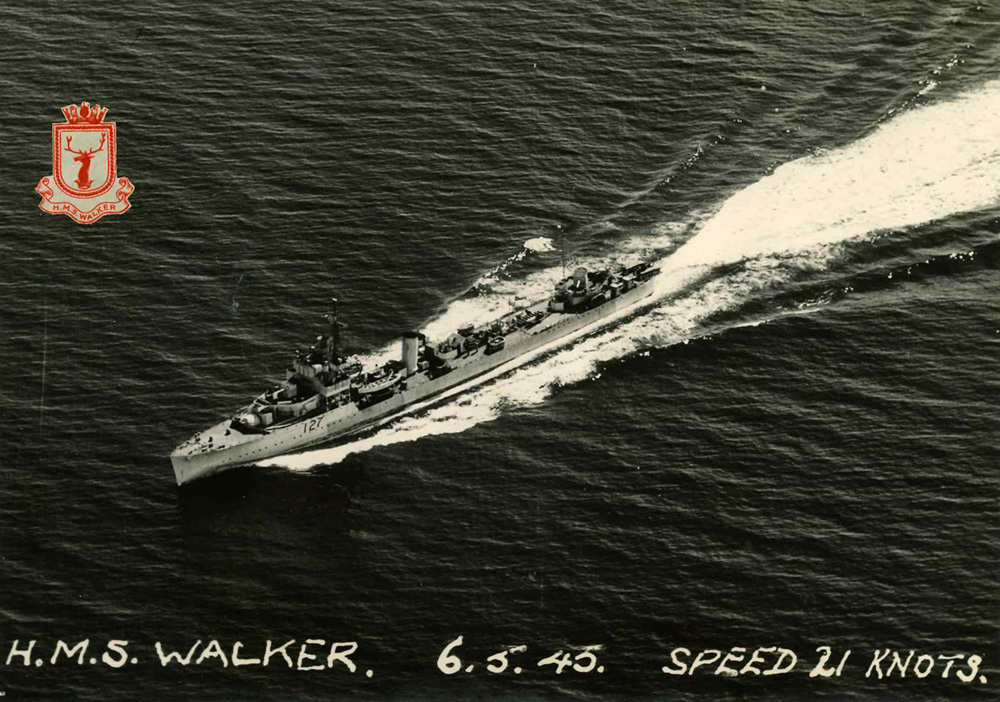
Click on the links within this brief
outline for first hand accounts by the men who served on HMS Walker
HMS
Walker (D27) was named after
Admiral Sir Baldwin Wake Walker, 1st Baronet (1802 – 1876), the
Surveyor of the Navy from 1848 to 1861 who was responsible for the
introduction of the Ironclad warship and the decision to build HMS Warrior but a silver "challenge cup" was presented to HMS Walker
in the 1920s by the 4th Baronet Walker of Sand Hutton near York who
mistakenly believed the ship was named after his father, Rear Admiral
Charles Francis Walker (1836 - 1925).
HMS Walker was built at Dumbarton on the north bank of the Clyde by William Denny and Brothers, launched on 29 November 1917 and completed and commissioned on the same day, the 12th February 1918. Walker took part in the British campaign against Bolshevik forces in the Baltic in 1919 and was shelled by the battleship Petropavlovsk during an attempted breakout of the Bolshevik fleet from Kronstadt. In 1920 HMS Walker entered the Manchester Ship Canal at Eastham Locks and paid a courtesy visit to Manchester.
Throughout
the 1920s she was part of the Atlantic Fleet, first with the 1st
Destroyer Flotilla and from 1926 with the 5th DF but during this time
took part in Summer Cruises in the Mediterranean. HMS Walker was presented with a splendid silver cup by Major Sir Robert Walker,
in memory of his father Rear Admiral Charles E Walker RN who died in
1925. Stan Ewles describes his time training as an Artificer at
Portsmouth and Chatham before joining HMS Walker, his first ship, in August 1930 on
peacetimes cruises in the Baltic and Mediterranean for eighteen months.
In 1932 HMS Walker was placed in Reserve st Rosyth at the Firth of
Forth. In August 1939, she was recommissioned with a reserve crew to
participate in the Royal Review of the Reserve Fleet by King George VI.
At the outbreak of war HMS Walker was based at Plymouth with the 11DF. On 11 September 1939 while returning from escorting a convoy Walker and Vanquisher collided 200 miles southwest of Ireland,
killing 14 men, with both ships seriously damaged. The First Lieutenant
was compelled to shoot some of the injured trapped in the wreckage. Her
repairs took until mid-November while Vanquisher was not fully repaired until early January 1940. Sub Lt J.H. Adams (later Rear Admiral Adams) had only just joined Walker and described the dreadful consquences of the collision in his Diary and on the website of HMS Vanquisher.
Walker
resumed escorting convoys in the South Western Approaches until April
1940 when she transferred to the Home Fleet at Scapa Flow to support
operations during the Norwegian Campaign. She was attacked from the air
while evacuating troops from Andalsnes and Molde on the 30 April and 1
May and was the last Allied ship to leave the Narvik area when she
escorted the final Allied evacuation convoy from Norway on 8 June.
On 2 July she made an unsuccessful attack on U-47 after the sinking of the Blue Star passenger liner Arandora Star carrying German and Italian internees from Liverpool to Canada (800 died out of the 1,647 aboard). U-47 was sunk on 7 March by HMS Wolverine and Verity and her CO Gunther Prien, who sank the Royal Oak, killed. HMS Walker was under repair until October 1940.
On 5
February 1941, HMS Walker became the leader of the 5th Escort Group based at Liverpool with Cdr Donald G.F.W.Macintyre RN in command as described in his autobiography U-Boat Killer (London: Wiedenfield and Nicolson, 1956). In March 1941 while escorting Convoy HX 112 HMS Vanoc assisted by Walker attacked and sunk U-100 (Joachim Schepke) and HMS Walker sank U-99 and captured her commander, U-Boat ace Otto
Kretschmer. The defence of HX 112
and the loss of three ace u-boat commanders was a decisive victory for
the 5th EG and a turning point in the Battle of the Atlantic.
When
two out of the three locks to Gladstone Dock were damaged in the
Liverpool Blitz of May 1941 HMS Walker and the other escorts were moved
to Londonderry. After a refit at Southapton Walker
was sent to Havelfjord in Iceland until February 1942 when she went to Halifax, Nova Scotia, to join the Western Local
Escort Force and Cdr. James M. Rowland RN took over as CO. In March 1942 after a successful Warships Week national savings programme HMS Walker was adopted by Sale, in Cheshire, now part of Greater Manchester. HMS Walker had visited Manchester in 1920 but almost nothing is known about her adoption by Sale in 1942.
HMS Walker was converted into a Long Range Escort (LRE) at the King George VI dock on the Thames between January and May 1943 and
in July was assigned to the 4th Escort Group at Londonderry for convoy defence
duties in the North Western Approaches. Between February and May 1944, Walker (Lt Cdr Arthur N. Rowell RN) operated with the 8th Escort Group escorting Arctic convoys to the Kola Inlet in North Russia as
described by Lt James Glossop RN, ABs Albert Foulser and Bill Perks and
illustrated with Albert's photographs on his "box Brownie" camera. They were both 97 when they died but bright and alert though Albert George Foulser
was rather deaf. Albert died on 15 December 2021 at his home in
Loughton, Essex. Lt Cdr James Glossop RN, the last surviving officer,
died at his retirement home in Bathurst, Australia, on Sunday 13
February 2022 and his funeral was on 22 February, five days before his
98th birthday.
Commanding Officers
| Lt. Cdr Lawrence F.N. Ommanney RN (July 1922 - August 1923) Lt Cdr Ralph Berthon Gossage RN (30 Oct 1926 - 14 December 1928) Lt. Cdr Guy B. Amery-Parkes RN (Dec 1928 - Oct 1930) Lt. Aubrey St Clair-Ford, RN (1932) Cdr. Leslie Swain Saunders, RN (1934) Cdr. Wilfrid James Cameron Robertson, RN (Aug 1939 - Jan 1940) |
Lt.Cdr. Arthur Andre Tait, RN (Jan 1940 - Feb 1941) Cdr. Donald George Frederick Wyville MacIntyre, RN (Feb 1941 - Feb 1942) Cdr. James Marjoribanks Rowland, RN (Feb 1942 - early 1943) Lt.Cdr. Arthur Nichol Rowell, RN (Apr 1943 - Sept 1944) Lt. Cdr. Antony Francis Trew, SANF(V) (29 Sep 1944 - May 1945] Lt. Thomas William Lancaster, DSC, RN (June 1945 - July 1945) |
Officers
Officers who served n HMS Walker between the wars with entries on the unithistories.com web site.
| Lt John "Jack" G.P. Brownrigg RN (Dec 1927 - August 1929) Sub Lt John E.S. Bush RN (July - Sept 1932) Lt Desmond L.C. Craig RN (Jan 1933 - Jan 1934) Lt George V.M. Dolphin RN (Nov 1927 - August 1929) |
Lt(E) Michael E. Evans RN (Dec 1930 - Jan 1932) Mid John B. Rooper RN (May - Aug 1922) Lt Peter W.F. Stubbs RN (Sept - Dec 1938) Lt Arthur O. Watson RN (April 1924 - Jan 1925) |
| Lt John H. Adams RN (22 August 1939 - Dec 1940) Tp Gnr (T) J E Baker RN (5 May 1945 – Jun1945) Sub Lt Robert Boyd RN (19 Feb - April 1940) Lt R W D Bray RN (14 Jan 1941 – Feb 1941) Gnr (T) H Brooks RN (25 Jun 1942 – Feb 1943) Tp Sub Lt (E) R R Brooks RCNVR (14 Oct 1943 - Mar 1945) Tp Lt R G M Brown RNVR (14 Jun 1942 – Mar 1943) Gnr (T) J Chaplin RN (28 Jan 1941 – Jun 1942) Mid J A Cotching RNR (26 Aug 1939 – Aug 1940) Tp Sub Lt Arthur Dodd RNVR (31 Jan 1944 - April 1945) Gnr (T) Ernest G Evans RN (29 Jun 1939 – Apr 1940) Lt James J Glossop RN(20 May 1943 – 22 Nov 1944) A/Sub Lt C W Graham (29 Apr 1940 – Sep 1940) Surg Lt Graves Merries RNVR (15 Mar 1945 – May 1945) Mid J.A. Gotching RNR (26 Aug 1039 - ) Mid (E) B D Griffith RN (5 Mar 1945 - Jul 1945) Lt Cdr Reginald G C Haines RN (2 Aug 1941 - Sep 1942) Tp Lt (E) Ernest C Y Hughes SANF(V) (18 Mar 1944 – Jan 1945) Tp Wt Eng H Hunn RN (15 Jul 1943 – Mar 1944) Tp Surg Lt E Kavanagh RNVR (6 Aug 1941 – Jun 1943) Tp Lt (E) S W Keck RNR (27 Mar 1945 – Jul 1945) Lt J C Langton DSC RN (18 Jul 1939 – Aug 1941) |
Tp Sub Lt E R Lawson
RNVR (May 1943 – May 1945)
Tp Surg Lt J C Macauley RNVR (20 Jun 1943 – Sept 1944) Tp Sub Lt A H B MacClatchley RNVR (25 Jun 1942 – Feb 1945) Sub Lt R B Mann RNR (17 Apr 1941 – Feb 1945) A/Sub Lt J H Milner RNR (16 Oct 41- Jun 1942) Tp Lt D K Morley RNVR (14 Feb 1942 – Mar 1943) Lt Derek W Napper RN (30 Aug 1944 – May 1945) Mid (E) C E R Newman RIN (5 Mar 1945 – Jul 1945) Tp Gnr (T) A W Norish RN (13 Feb 1943 – May 1945) Tp Surg Lt J R Oliver RNVR (19 Aug 1940 – Aug 1941) Wt Eng G F Osborne RN (9 Mar 1939 - Jul 1943) Tp Sub Lt D Payne RNVR (21 Jun 1943 – Mar 1944) Tp Lt A D “Sandy” Powell RNVR (20 Mar 1944 – Apr 1945) Lt F V Robinson RCNVR (13 Oct 1943 – 27 February 1944) Sub Lt R R Rossiter RN (10 Oct 1944 – May 1945) Lt J W R Spedding RN (24 Aug 1939 – Apr 1940) Sub Lt R S Stainer RN (13 Aug 1940 – Apr 1941) Lt P D Sturdee RN (5 Sep 1940 - Aug 1944) Surg Lt A L Taylor RNVR (23 May 1940 40 – Aug 1940) Tp Lt (A/S) R S Walker DSC RN (Mar 1941 – Sep 1941) Sub Lt R Westlake RNVR (15 Jan 1941 – Jun 1942) |
Former full members of the V & W Destroyer Association who served in HMS Walker
The V & W Association included
more men who had served in HMS Walker than any other V & W
J. Bardgett (Morecombe, Lancs), William Douglas Aldrige "Jock" Begg (Ormskirk, Lancashire), J Clark (Braintree, Essex), G. Cook (Wells, Somerset), Albert Foulser
(Loughton, Essex), K. Harnett (Stockport,
Cheshire), C.H. Hill (Braintree), J Hope (Blackburn, Lancs), J. Howard (East Preston, West
Sussex), M. Jay (Gloucester), H. Kidd
(Didcot, Oxon), F. Lees (Rochford, Essex), David Napper (Woodbridge, Suffolk), C. Parker (Freemantle, West Australia), Bill Perks
(Leamington Spa), J. Perry (Southall, MIddx), J. Prior (West
Moseley, Surrey), R.L. Sayer (York), J. Strickland
(Port aux Basques (Newfoundland, Canada), S. Taylor (Burgess Hill, Sussex),
L. Wadsworth (Menstrie, Clackmanshire), J. Whitmill (Liskeard,
Cornwall).
Please get in touch if you knew one of these men or had a family member who served in HMS Walker
Cdr Donald G.F.W. Macintyre RN
Donald
George Frederick Wyville Macintyre was born at Dehra Dun, the son of a
major general in the Indian Army, on the 26 January 1904. He attended a
preparatory school in Cheltenham and the Royal Navy College Osborne
before joining the Royal Navy as a fourteen year old cadet at Dartmouth
in 1917. His career before the war was somewhat unusual in that he
spent five years with the Fleet Air Arm from 1928-33 during which he
learned to fly and was a pilot on aircraft carriers.
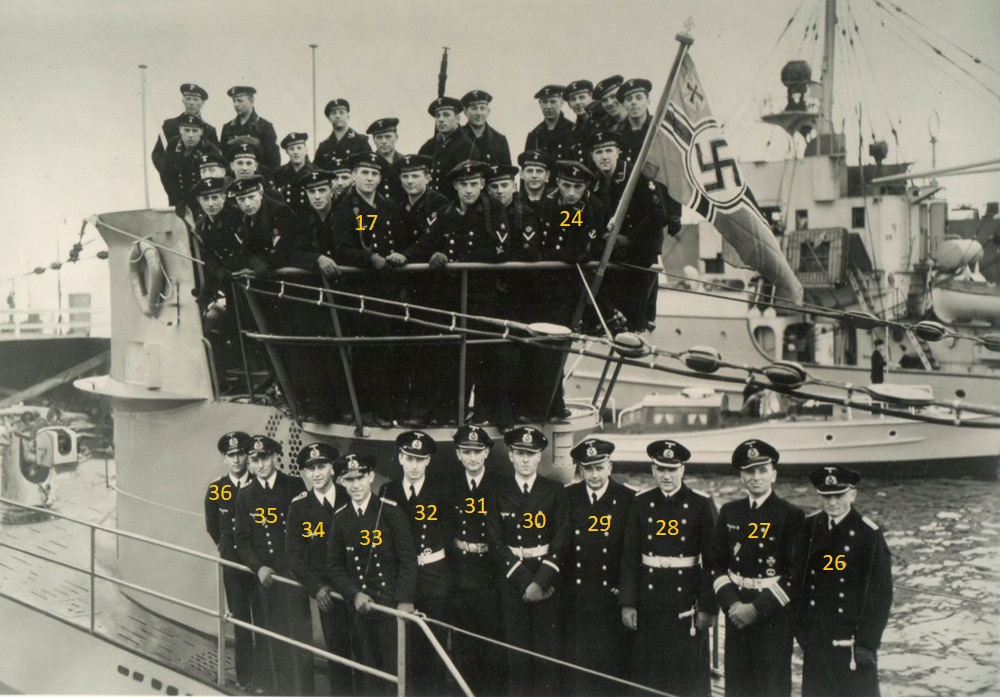
U-Boat Killer versus U-Boat Ace
The defence of Convoy HX 112 by
HMS Walker and the 5th Escort Group
17 March 1941
This short uncredited article was first published in Hard Lying,
the magazine of the V & W Destroyer Association and republished in
2005 by the Chairman of the Association,
Clifford ("Stormy") Fairweather, in the book of the same name which is
now out of print. Paul Smith, the
grandson of George Smith, the Wireless Operator in HMS Walker, supplied the photograph of uboat ace Otto Kretschmer disembarking from Walker
at Liverpool after Macintyre sunk U-99. George Smith kept in touch with
his former CO long after the war ended but never wrote an account of
his own service as a Telegraphist in HMS Walker.
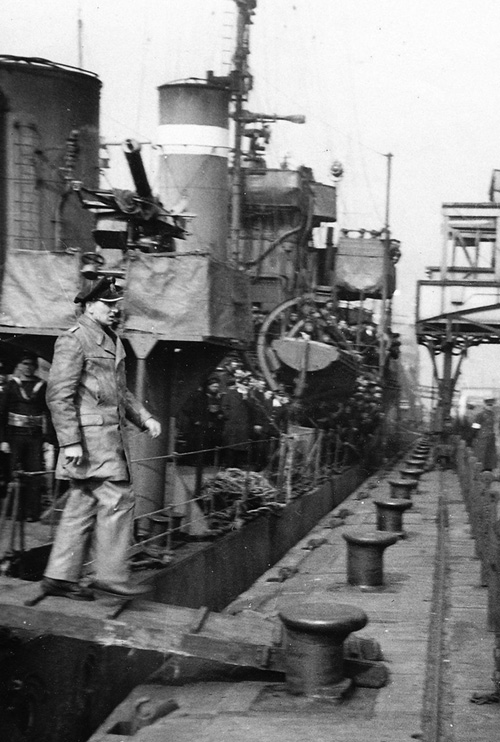
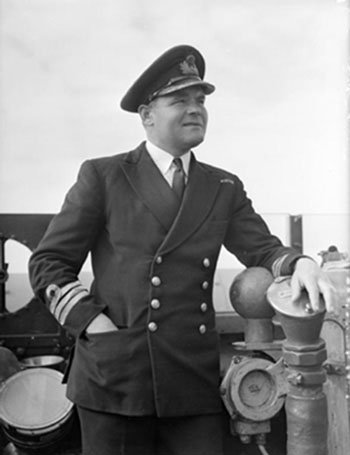 By early 1941 merchant ship losses
had become disastrously high. The U-boat aces were having a very
successful time until the V&Ws took a hand in March. On 8 March,
HMS Wolverine, commanded by
Commander J.M. Rowland (who succeeded Macintyre as CO of HMS Walker in February 1942), attacked and sunk U-70 south of Iceland while
escorting convoy OB 293. Wolverine and Verity were jointly credited with sinking U-47 commanded by U-boat ace, Gunther Prien (who sank the Royal Oak at Scapa Flow) in the same action.
By early 1941 merchant ship losses
had become disastrously high. The U-boat aces were having a very
successful time until the V&Ws took a hand in March. On 8 March,
HMS Wolverine, commanded by
Commander J.M. Rowland (who succeeded Macintyre as CO of HMS Walker in February 1942), attacked and sunk U-70 south of Iceland while
escorting convoy OB 293. Wolverine and Verity were jointly credited with sinking U-47 commanded by U-boat ace, Gunther Prien (who sank the Royal Oak at Scapa Flow) in the same action.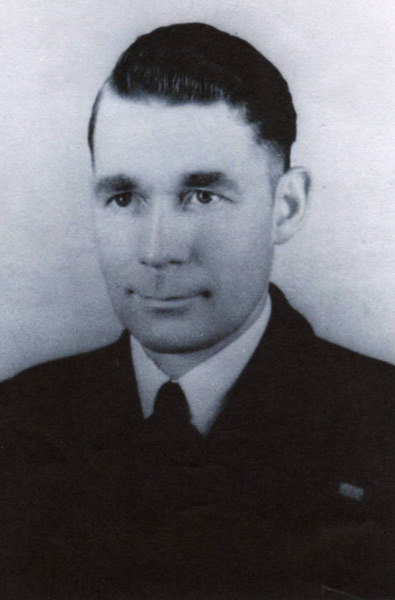 William Douglas Aldrige "Jock" Begg during training in 1942
Courtesy of his son, Brian Begg |
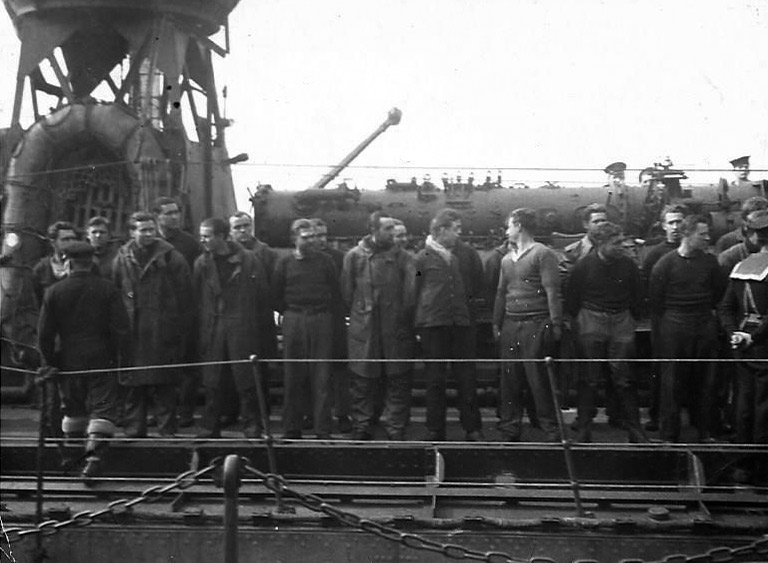 Jock Begg is second from the right behind the torpedo tubes and the survivors from U-99 on HMS Walker
Courtesy of his son, Brian Begg |
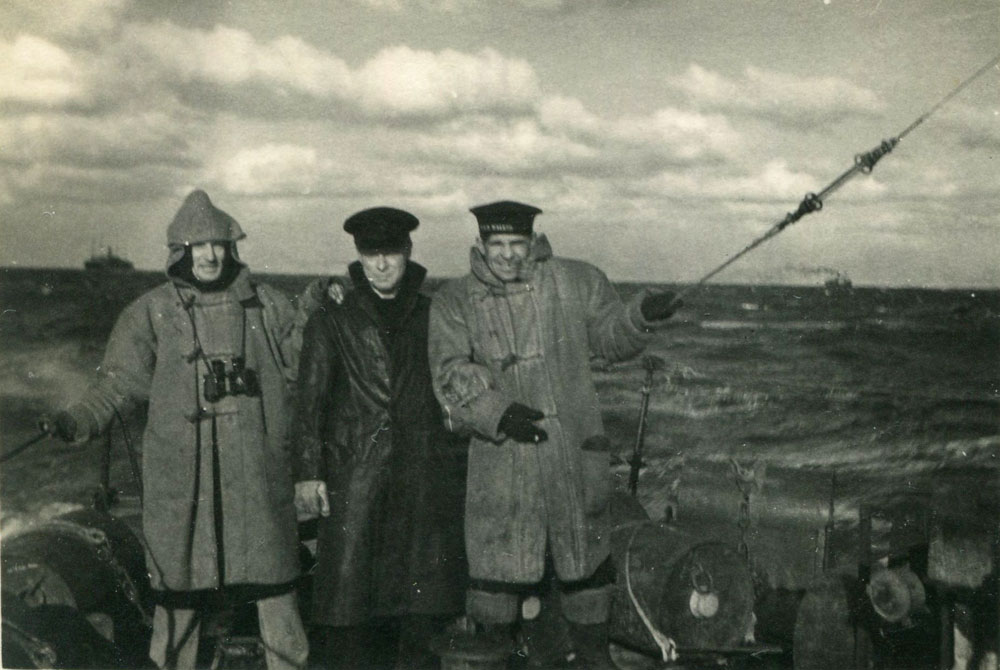
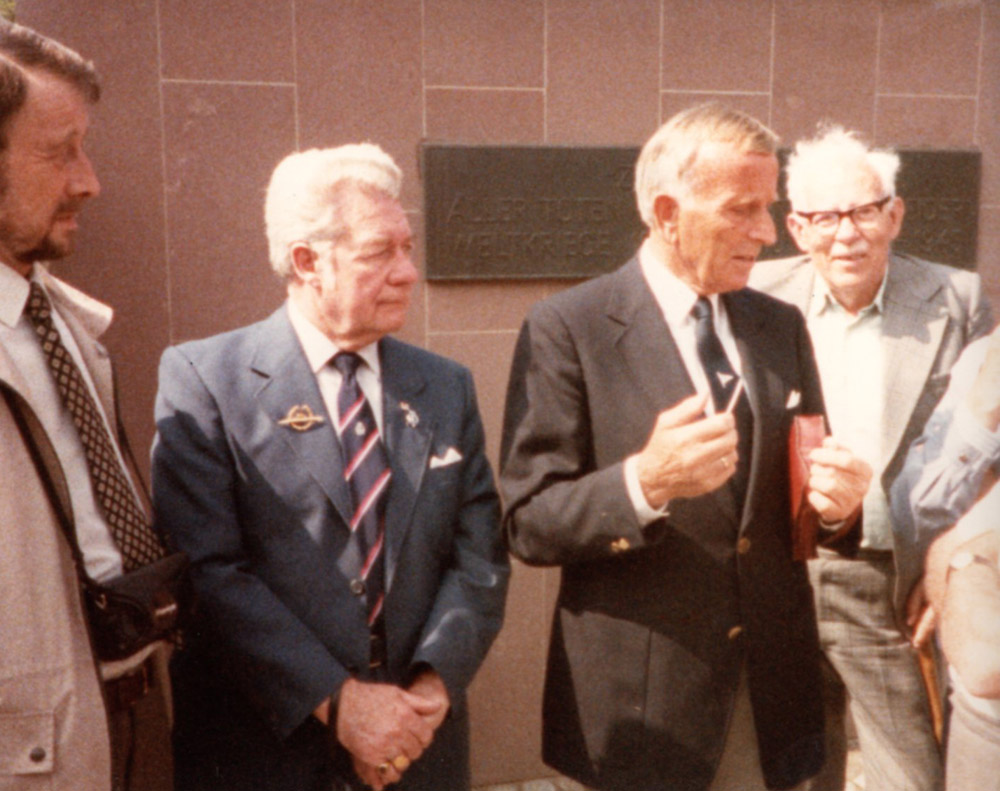
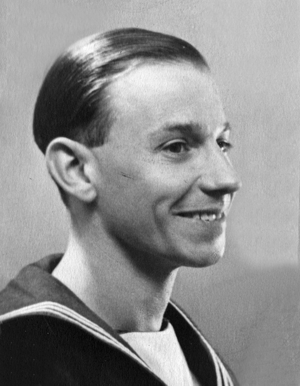
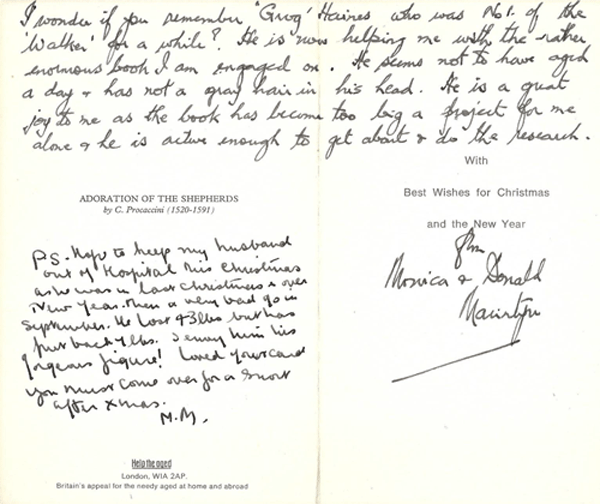
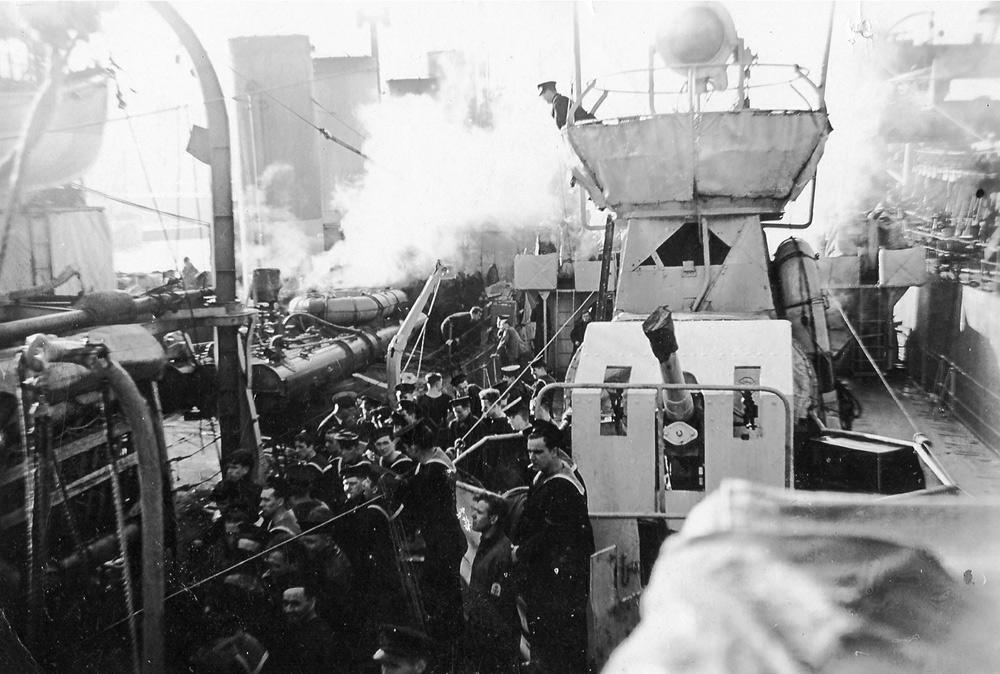
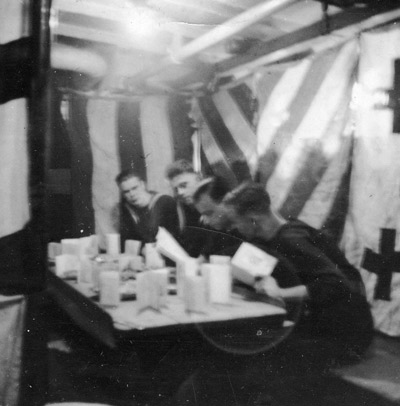 |
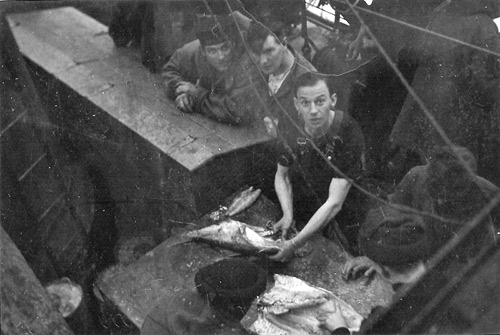 |
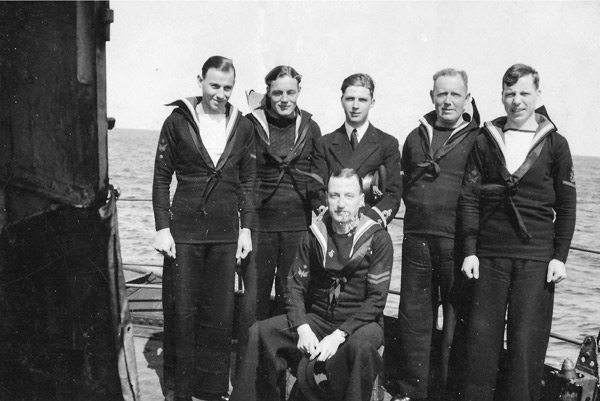 |
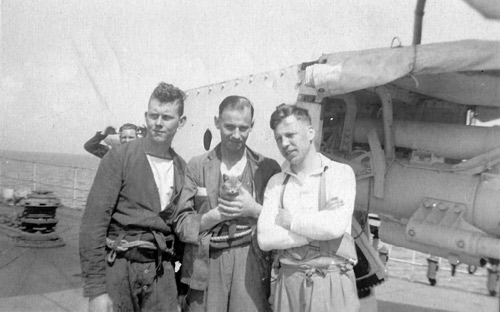 |
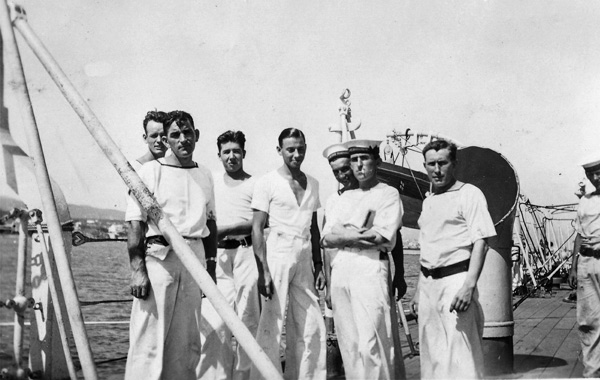 |
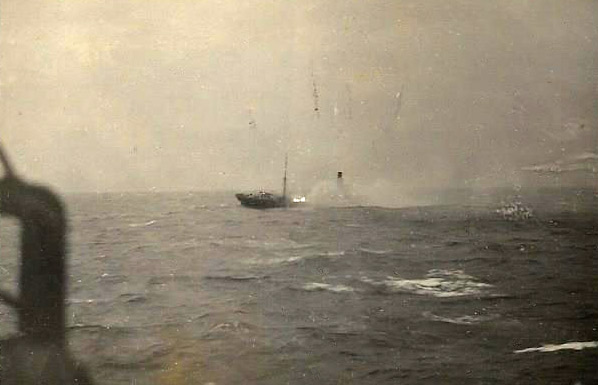 |